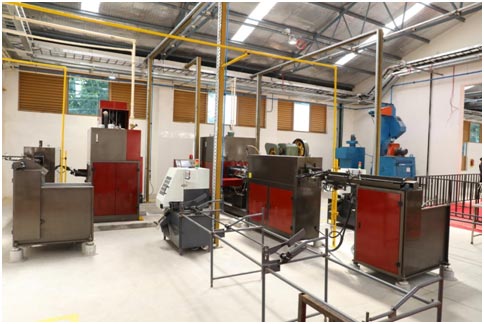Material Composition of Ball Valves
Valves are essentially devices installed on a pipe line to control or isolate the flow. They can be kept in fully shut, open or partially open mode. In plumbing systems, the valves that are commonly used are Ball, Check, Butterfly and Pressure Reducing Valves.
We at Lehry Valves, have taken the first huge leap in setting up India’s first Manufacturing facility for the production of non-ferrous and lead-free valves following various national and international standards. The 2 main hubs for the production of forged brass valves are Italy and China, but our idea was to break this chain and set up a facility in our very own Country, taking advantage of the various schemes put forth by the Government of India and also availability of many Class-A raw material suppliers at an arm’s length disposal.
Who we are:
Lehry Valves, founded in the year 1950 has been part of the industry for more than 7 decades with rich experience in manufacturing ferrous and non-ferrous mechanical & automated valves. Lehry also provides automation solutions for water conservation such as smart wireless water management systems and Overhead tank & pump controlling systems that have aided in saving water in the range of 15%-30% compared with pre-automated water consumption patterns.
Lehry Valves mainly caters to residential, commercial and hospitality projects with another arm catering to various Industries such as Pharmaceutical, aerospace, food, automotive etc. We boast a large clientele consisting of India’s most renowned builders, large EPC contractors and our main business is in the OEM market - manufacturing products that in turn compliments performance and working of larger equipment's like Pumps, cement mixers, W&STP systems etc.
About the Factory:
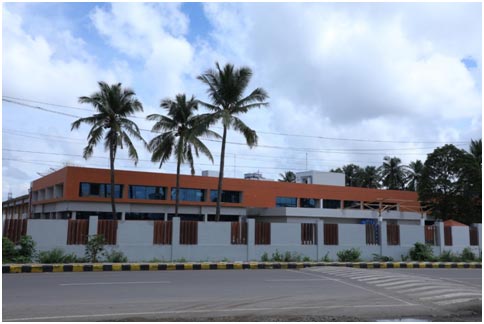
Built on 160,000 sq.ft of land, this manufacturing facility produces lead-free and non-ferrous products that adhere to national and international standards and certifications.
The manufacturing unit is extremely energy efficient and utilizes solar energy currently capped at 30% of its’ power dependency. The machines and product designs are to produce the brass ball valves and as the very first will bear an ISI marking. The facility is fully automated and initially will operate at an estimated error rate (number of flawed end products produced) of less than 7% of overall production. With the addition of increased automation, this percentile will consistently decrease until we reach an industry-best benchmark of less than 1% failure rate.
The facility incorporates 2 state-of-the-art forging machines (one horizontal and one vertical) that have the combined capacity to produce 8000 valves in just one shift, currently surpassing demand. Due to the large production capabilities, we are looking at an export market that will cover a predicted 30% of overall production and will earn considerable foreign exchange.
What do we intend to change?
In the field of plumbing, we have numerous standards that guide us on valve and material selection. However, we miss out on two major parameters:
- Lead content in the composition of brass
- Contents of the valve's body that is NOT in “contact” with water
- Testing standards that actually MATTER.
Let us begin with point one. In India, we mostly follow CW 617 N / IS-6912 FLB standard for brass alloy used for ball valves for plumbing. This is a standard that sets limits on the percentage of the different metals used in the brass alloy. Lead is used in brass alloys meant for forging as lead makes the alloy ductile enough for forging. The Standard states that the amount of lead (Pb) is not to be more than 2.5% and Copper (Cu) not more than 60% etc. This again, is “limited” to the alloy used for the valve's body that comes in contact with water. Other components use alloys other than CW 617N. However, if not carefully selected, the lead content could be higher which would lead to many health effects – and this is primarily done only to bring down material cost (by increasing lead content, copper content can be brought down, thereby directly affecting cost).
The non-existence of proper standards guiding the manufacturing and material selection of ball valves is the main issue that has led to many manufacturers taking advantage of the loophole; however, this will not be for long as we are working closely with standardization bodies in introducing proper codes that will dictate material composition and construction of ball valves (Such as a new ISI code). However, there are composition standards that help with material selection such as the aforementioned CW617N / IS 6912- FLB standard and also the international standard – C46500 / IS –6912 FNB which is the renowned lead-free composition standard for brass, which allows only 0.25% of lead in the brass composition. This is primarily followed in US and EU countries and is a mandated use throughout.
Another major problem faced in a ball valve is NOT the body because this is the sturdiest “part” and nothing hardly ever goes wrong with it but what DOES go wrong - is with the HANDLE.
Why? It is a rather “rusty” issue, really! The handle is fixed on the valve by a nut, and this “set up” forms a crevice. Now, rusting is accelerated at this localized region and thus makes this assembly weak.
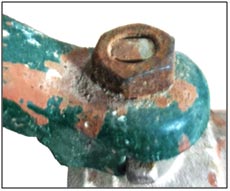
Rust on ball valve handle and at joint
It is due to this that we see, mostly in coastal regions, that many handles of ball valves break within a span of one year. This problem gets extra attention when final site inspection is carried out by the consultant and the client. The consultant will ask for replacement of the ball valve if any ball valve has either rust or a rusted handle. The ball valve is actually in perfect working condition - but the consultant will ask for replacement with a rust-free new ball valve. The contractor knows that without the replacement his final payment will get stuck. This problem is further aggravated if the project has been delayed to various reasons. It could be as much as 18 - 36 months between valve installation and final inspection.
The solution – Dacromet*. It is always best to use brass ball valves that have Dacromet plating on their handles. Dacromet is a mix of aluminum and zinc flakes and acts as a “barrier” to corrosion and making it three times stronger than zinc coated handles. Dacromet is widely used in the automobile industry for the very same reason – corrosion prevention!

M.S. handle with a ‘Dacromet’ coating
An alternative solution is to use aluminum handles. These handles are completely rust proof and long lasting. There is a drawback of aluminum handles - they are brittle and liable to crack in case of impact (e.g., when the valve is dropped on to the floor).
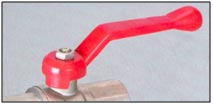
Aluminum handle
Testing:
We see embossed on ball valves “PN40” / “PN30” / “PN25” / “PN16” - meaning that the seats of the brass ball valves are tested to these pressures (in bar or kg/cm2 - e.g., PN16 valves are tested to 16 bar). These are the required pressure testing standards BUT here again, in the field of plumbing, we hardly ever operate at such high pressures.
On this subject, we need to study a little beyond the body of the valve - we look at the ball itself! The ball is a free-floating ball that “sits” on the soft seat of the valve. When the valve is operated at high pressure, it is natural that the ball will sit on the seat due to the pressure and chances of leakage are second to none. However, at lower pressures, there is no absolute “guarantee” that this free-floating ball would sit securely on the soft seat. Something like a small dent on the seat could cause leakage that would not otherwise be seen in high pressure tests. This would obviously cause leakage and these low pressures are what we face and implement in plumbing.
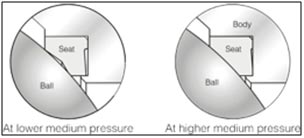
Sketch of brass ball pressing against the seat of the valve body
This is why, it is absolutely necessary to have ball valves tested at even low pressures (usually through pneumatic bubble test) so the buyer can be certain that the valve would not leak at even low operating pressures.
On a concluding note - there is a standard available for all components and a solution to potential technical problems.
Here are some valves (Non-ferrous & lead free) that will be manufactured in our new LEED-Platinum Rated Manufacturing Plant in Chennai;
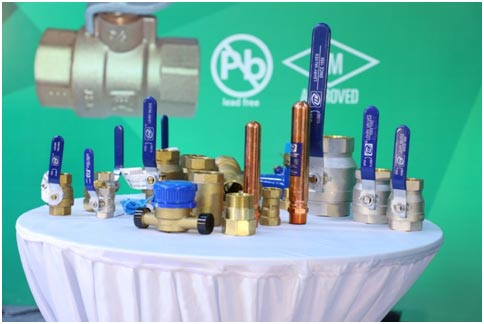
Author’s Note:
‘Dacromet’ is one of many brand names for zinc-rich dip-spin coating systems used for anti-corrosion.
Wikipedia - “Zinc flake coatings containing Cr (VI) (hexavalent chromium): surfaces containing Cr (VI) provide greater anti-corrosion protection with a thinner coating, but Cr (VI) is carcinogenic and poses a potential risk to the environment. Cr (VI)-free coatings are more environmentally friendly than surfaces with a Cr (VI) content”.


